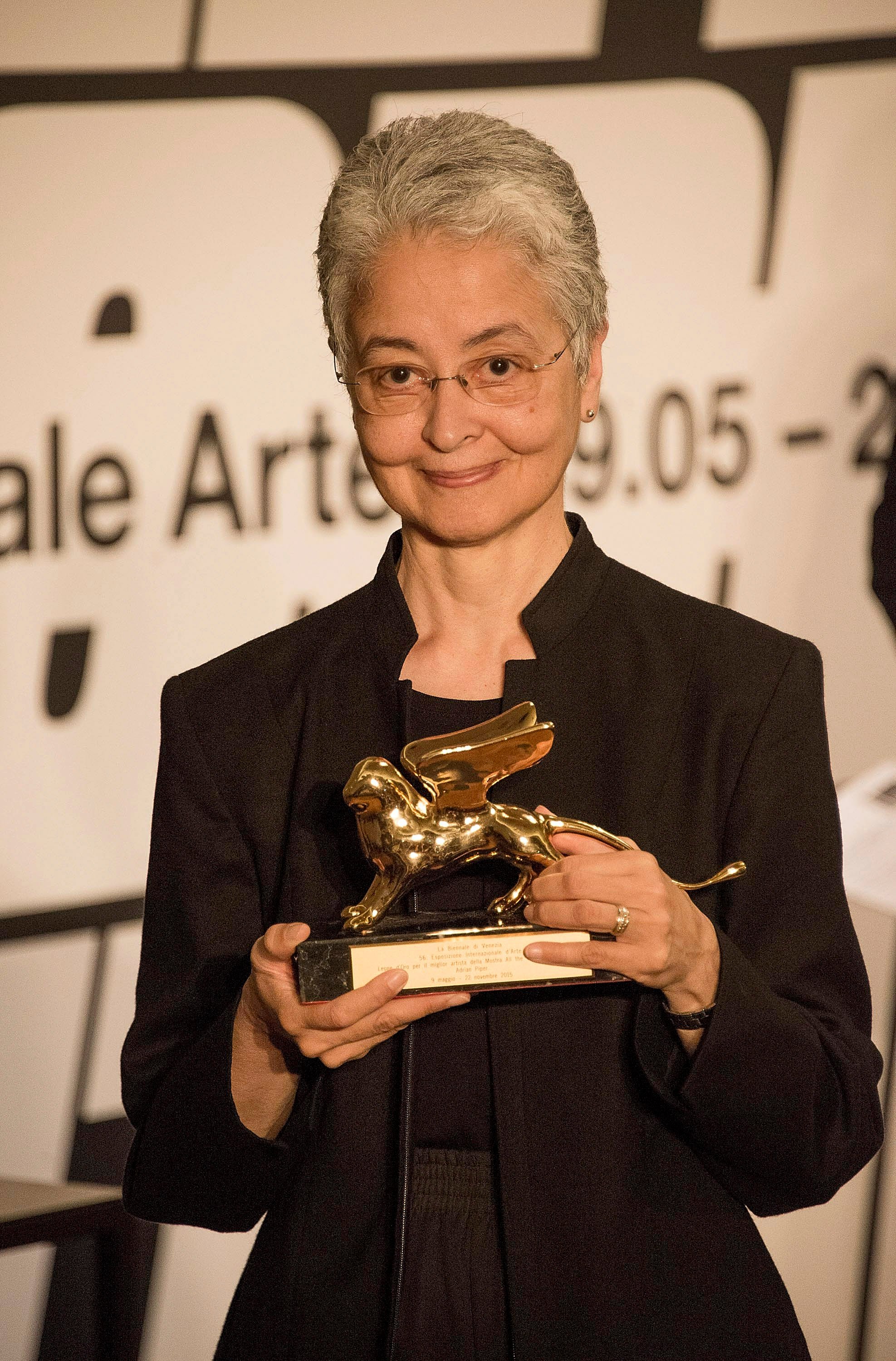
Last week, artnet News published a research project in collaboration with In Other Words titled “Women’s Place in the Art World: Why Recent Advancements for Female Artists Are Largely an Illusion.” We examined the presence of women in museums and the market over the past decade and found that, despite public perception, progress has in fact been quite limited. The report includes an examination of museums; an examination of the market; four case studies on museums making change; visualizations of our findings; an investigation into maternity leave in the art world; art-world reactions to the data; and our methodology.
In response to the project, artist Adrian Piper wrote the following letter pointing out an important factor she felt was missing. Read her text in full below.
In your “Special Report: Women’s Place in the Art World,” I counted nine of your interviewees who expressed frustration with the inadequate information available to collectors, board members, museums, and curators about the work of women artists. For example, Michelle Millar Fisher, Curator of Contemporary Decorative Arts, Museum of Fine Arts, Boston, comments, “I call bullshit on the idea that it takes a while [to see change]. How much more time does it take? If a new generation of art historians and curators have to be resensitized to this then my god, we have amnesia at this point.” Artist Andrea Fraser deplores the dominance of “mass-marketing of the taste of the wealthiest and most influential collectors” over “the idea that we need to educate the public and not cater to established tastes and the spectacle of fame or of genius.” And Agnes Gund, collector, recalled, “When I was taught art history, there were very few women. There was Marisol. [Artemisia] Gentileschi was another one. But other than that, there weren’t many that were even mentioned.”
You yourselves echo this frustration with the art world’s pervasive ignorance of art by women at least five times. For example, you note that “there is less research published on the work of women, which makes it more difficult to create value around them.” You warn the reader that “given the current perception gap between people’s sense of progress and the reality about the discernible lack of it, perhaps one of the key takeaways is that the stories we tell ourselves—about our museums and our societies—are not to be trusted.” And you recount what happened “[w]hen a female artist made auction history last October… a man nonetheless managed to steal the limelight. Five bidders had vigorously pursued British artist Jenny Saville’s 1992 painting of a fleshy female nude at Sotheby’s, pushing the price to £9.5 million with fees ($12.5 million) and setting a world record for a living female artist. Yet attention was swiftly diverted when onlookers noticed that the final lot of the evening, Banksy’s Girl With Balloon (2006), had suddenly begun to shred itself. By the following morning, the self-destructing Banksy was international news, while Saville was a historical footnote.”
The text above in boldface is the only reference to the role of the press that I could find in your 30-page report. Then I counted the number of issues of your newsletter that have headlined Banksy since your first report of the “self-destructing Banksy” on October 6, 2018. Since then, artnet News has announced Banksy’s work as its lead article 24 times. By contrast, you have not headlined Jenny Saville’s work even once.
But let’s look at the example I know best. artnet News did not report my winning the Golden Lion for Best Artist at the 2015 Venice Biennale. artnet News did not include my 2018 MoMA retrospective among your 2018 museum previews. artnet News—alone among all major US art publications—did not review the exhibition. And in your three-part Best Exhibitions of 2018 survey of “globetrotting art aficionados” (December 17, 19, and 21, 2018), your daily newsletter curiously neglected even to announce Part Three, in which my retrospective was chosen twice.
Your report claims to identify the most significant factors that contribute to the art world’s irresponsible treatment of art by women with regard to institutional and gallery representation, collector acquisition, and auction visibility. It repeatedly targets and deplores the effect of insufficient information, research, and education in preventing women artists from achieving visibility and parity in these areas. Yet everyone knows that the press is the most powerful arbiter of what is considered worth discussing, teaching, exhibiting, collecting, and auctioning. It is remarkable that your report neglects to examine what is arguably the most significant factor of all in perpetuating the invisibility of art made by women. It says nothing about artnet News’s own role in protecting the status quo. This omission undermines the credibility of your efforts.
You conclude your report with suggestions for improvement. Yet you decline to consider the impact on rectifying these injustices that the press, and artnet News in particular, could have by simply choosing its content more impartially and subjecting its own editorial values to greater critical self-reflection.
Adrian Piper
Do you have a response to our project? We’d love to hear from you. Please send your responses—from criticism to personal experience to something you’d like to see us investigate further—to media@artnet.com with the subject line “Women’s Place in the Art World.”